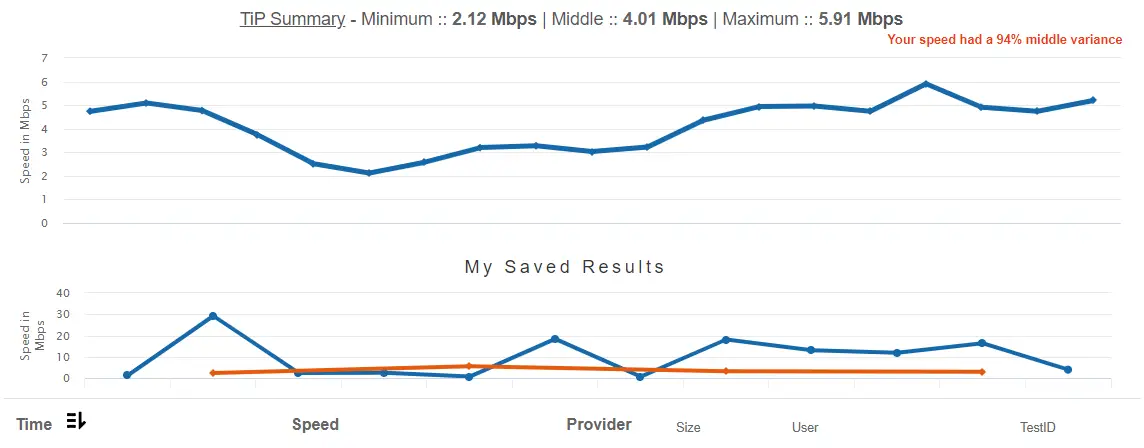
What is Bandwidth and How Much Data Usage Do I Need?
Posted March 5, 2020, 10:34 a.m. by Emil S.It is quite easy to ignore the technological term Bandwidth as not applicable to you unless you are tech-savvy and like playing around with tech products and setting up hardware. However, learning what Bandwidth is and how it applies to your network helps you adjust your network setup to enjoy a faster, smoother Internet connection when you need it.
If your internet connection slows down suddenly then it is during most days, you might suspect that you are getting lesser Bandwidth than what you pay for or you might want to buy more. Having an understanding of Bandwidth is also important when you are going to buy a video streaming service or gaming console and want to make sure you will be able to use it without affecting the rest of the network.
Gaming and video streaming are two of the most bandwidth-intensive activities for most people. Let us try to understand the basic concepts associated with Bandwidth.
What is Bandwidth?
Bandwidth is the maximum amount of data that can be transmitted via the internet service provider over a specific period. It relates to the capacity of the communication link to
transfer data from one node to another.
For digital devices, Bandwidth is generally measured in bits per second (bps) or bytes per second. In the case of analog devices, it is represented as cycles per second or Hertz (Hz). Bandwidth is
specifically important for I/O devices. Networks with larger Bandwidth are capable of transferring
a greater number of data packets as compared to networks with lower Bandwidth.
Though Bandwidth doesn’t control the speed at which data packets transfer from one node to the
other, a lower capacity creates a bottleneck in the network resulting in slow response for the users.
For example, low Bandwidth can display a web page consisting of text but would struggle to load
an online video game that needs carrying large data packets. Such a condition leads to problems
like lags, where the Internet speed is too slow to display things in real-time.
How Much Bandwidth Do You Need?
Bandwidth is usually measured in millions or billions of bits per second (Mbps or Gbps). Calculating the Bandwidth is done by measuring the time taken by a file to leave the origin node and reach the destination node completely. How much Bandwidth you require generally depends on what you intend to do with the internet connection. More is often better, however, limited by your budget.
Typically, if you don’t want to do anything more than video watching and web browsing, a low-end
and a high-speed data plan would work for you. On the other hand, if your household has some televisions streaming Netflix and some tablets, laptops and other devices that use the internet for
gaming and video streaming, you should go with the highest Bandwidth you can afford.
For businesses, it is essential to find out how much Bandwidth is required to perform daily
operations. This involves determining the number of employees using the connection
simultaneously and considering the bandwidth requirements for the applications they use.
Difference Between Mbps and MBps

Bandwidth is measured in different units like bytes, megabytes, kilobytes, gigabits, etc. Your Internet Service Provider may use one term while the streaming service uses another and the
testing service yet another one. This makes it important to understand the relation between these
terms and the method to convert between them.
For instance, 15Mbps and 15MBps are not the same. The first stands for 15 Megabits per second
while the latter means 15 Megabytes per second. Since 8 bits equal a byte, these two values differ
by a factor of 8. To express both these values in megabytes, 15 Mbps would become 1.875MBps.
And when written in megabits, the first is 15Mbps and the other is 120Mbps.
More About Bandwidth
As the bandwidth increases, the amount of data flowing through in a specific time also
increases. This is much like the amount of water flowing through a pipe increasing with the diameter of the pipe.
Let’s consider a situation where you are streaming a video, somebody else in the house is playing online video games, and others are downloading some files or watching videos from their phones.
There is a possibility that everybody feels things are somewhat sluggish. This relates to Bandwidth.
Comparing this to the plumbing analogy, let us assume that the pipe’s size remains the same and the number of faucets and taps turned on increases. The pressure at each point reduces
because the amount of water available remains the same.
Bandwidth is the fixed amount you get according to what you pay for. While one person can stream a video in HD quality without any lag as soon as another request for a download is added to the network, each of the people gets their portion from the full capacity.
The amount of Bandwidth available does not just determine the performance of a network. Other
factors like packet loss, jitter and latency also come into action to decide on its performance.
